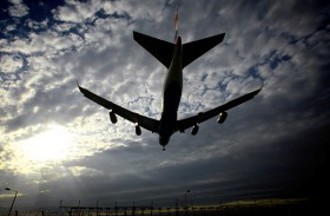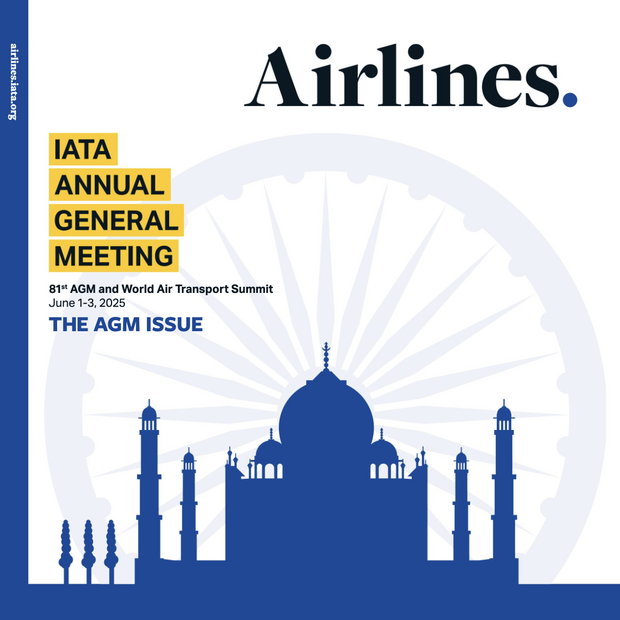
Translations:
(pdf) معدلات الطلب على السفر في أبريل بين التعافي المحلي والركود العالمي
国际航协:四月份国内客运复苏 国际旅行停滞 (pdf)
Recuperação de mercados domésticos e estagnação no tráfego internacional de passageiros em abril (pdf)
Demanda de abril, dos historias opuestas: recuperación de los viajes domésticos vs. estancamiento de los viajes internacionales (pdf)
La demande de voyages en avril : deux marchés, deux réalités (pdf)
Geneva - The International Air Transport Association (IATA) announced that domestic travel demand improved in April 2021 compared to the prior month, although it remained well below pre-pandemic levels, while recovery in international passenger travel continued to be stalled in the face of government-imposed travel restrictions.
Because comparisons between 2021 and 2020 monthly results are distorted by the extraordinary impact of COVID-19, unless otherwise noted all comparisons are to April 2019, which followed a normal demand pattern.
- Total demand for air travel in April 2021 (measured in revenue passenger kilometers or RPKs) was down 65.4% compared to April 2019. That was an improvement over the 66.9% decline recorded in March 2021 versus March 2019. The better performance was driven by gains in most domestic markets.
- International passenger demand in April was 87.3% below April 2019, little changed from the 87.8% decline recorded in March 2021 versus two years ago.
- Total domestic demand was down 25.7% versus pre-crisis levels (April 2019), much improved over March 2021, when domestic traffic was down 31.6% versus the 2019 period. As with March, all markets except Brazil and India showed improvement compared to March 2021, with both China and Russia reporting traffic growth compared to pre-COVID-19 levels.
“The continuing strong recovery in domestic markets tells us that when people are given the freedom to fly, they take advantage of it. Unfortunately, that freedom still does not exist in most international markets. When it does, I’m confident we will see a similar resurgence in demand,” said Willie Walsh, IATA’s Director General.
International Passenger Markets
| april 2021 (% vs april 2019) | world share1 | rpk | ask | PLF (%-PT)2 | PLF (LEVEL)3 |
|---|---|---|---|---|---|
| Total Market | 100.0% | -65.4% | -54.5% | -19.8% | 63.3% |
| Africa | 1.9% | -76.7% | -63.8% | -26.2% | 47.6% |
| Asia Pacific | 38.6% | -57.2% | -48.3% | -14.2% | 67.8% |
| Europe | 23.7% | -81.5% | -72.0% | -28.9% | 56.3% |
| Latin America | 5.7% | -64.7% | -59.9% | -9.8% | 72.3% |
| Middle East | 7.4% | -81.7% | -63.4% | -40.1% | 40.4% |
| North America | 22.7% | -50.7% | -37.4% | -18.0% | 66.8% |
1) % of industry RPKs in 2020 2) Change in load factor vs. the same month in 2019 3) Load Factor Level
Asia-Pacific airlines’ April international traffic was down 94.4% compared to April 2019, incrementally improved compared to the 94.9% decline registered in March 2021 versus March 2019. The region experienced the steepest traffic declines for a ninth consecutive month. Capacity was down 86.3% and the load factor sank 47.7 percentage points to 33.5%, the lowest among regions.
European carriers saw an 87.7% decline in traffic in April versus April 2019, barely changed from the 88.2% decline in March compared to the same month in 2019. Capacity fell 78.2% and load factor dropped 37.3 percentage points to 48.4%.
Middle Eastern airlines posted an 82.9% demand drop in April compared to April 2019, which was weaker than the 81.6% decline in March, versus the same month in 2019. Capacity declined 65.3%, and load factor fell 41.1 percentage points to 39.6%.
North American carriers’ April demand fell 77.9% compared to the 2019 period, an improvement over the 80.9% decline in March versus two years ago. Capacity sagged 59.3%, and load factor dropped 37.8 percentage points to 45.0%.
Latin American airlines experienced an 81.1% demand drop in April, compared to the same month in 2019, slightly bettering the 82.1% decline in March compared to March 2019. April capacity was down 75.8% and load factor dropped 18.0 percentage points to 64.6%, which was the highest load factor among the regions for a seventh straight month.
African airlines’ traffic fell 78.3% in April versus April two years ago, marking a significant deterioration compared to a 73.7% decline recorded in March compared to March 2019. April capacity contracted 64.0% versus April 2019, and load factor fell 29.1 percentage points to 43.9%.
1) % of industry RPKs in 2020 2) Change in load factor vs. the same month in 2019 3) Load Factor Level
Domestic Passenger Markets
| APRIL 2021 (%vs APRIL 2019) | world share1 | rpk | ask | PLF (%-PT)2 | PLF (LEVEL)3 |
|---|---|---|---|---|---|
| Domestic | 54.3% | -25.7% | -15.3% | -10.4% | 73.4% |
| Dom. Australia | 0.7% | -34.4% | -26.4% | -8.7% | 72.0% |
| Dom. Brazil | 1.6% | -60.9% | -58.7% | -4.2% | 77.6% |
| Dom. China P.R. | 19.9% | 6.8% | 16.3% | -6.9% | 78.2% |
| Dom India | 2.1% | -42.0% | -15.7% | -27.3% | 60.3% |
| Dom. Japan | 1.5% | -54.9% | -32.6% | -22.8% | 46.2% |
| Dom. Russian Fed. | 3.4% | 11.0% | 12.4% | -1.0% | 79.9% |
| Dom. US | 16.6% | -34.9% | -24.0% | -12.4% | 73.5% |
1) % of industry RPKs in 2020 2) Change in load factor vs. the same month in 2019 3) Load Factor Level
China’s domestic traffic returned to pre-crisis levels of growth, with demand up 6.8% in April compared to April 2019. In March demand was flat compared to the same month two years ago.
US domestic traffic declined 34.9% in April versus the same month in 2019, much improved from the 43.9% decline in March compared to two years ago. The US domestic market is expected to make a full recovery by the end of this year or early 2022.
The Bottom Line
“As we enter the peak summer travel season in the Northern Hemisphere, we know that many people want to enjoy their freedom to travel. But for that to happen safely and efficiently amid the COVID-19 crisis, a more targeted approach is needed. Most government policies today default to the closing of borders. After a year-and-a-half of COVID-19 there is sufficient data for governments to manage the risks of COVID-19 without blanket travel bans.
“We have, for example, strong indications from the US Centers for Disease Control and Prevention, the European Centre for Disease Control and Prevention, the Robert Koch Institute and others that vaccinated travelers pose very little risk to the local population. And data show that pre-departure testing largely removes the risk of unvaccinated travelers importing COVID. UK data confirm that about 98% of arriving passengers detained by universal quarantine orders left confinement with no signs of the disease.
“Last week we teamed-up with Airbus and Boeing to demonstrate potential methodologies to manage the risks of COVID-19 to keep populations safe while restarting global connectivity. Governments are naturally risk-averse, but successfully managing risk is aviation’s bread and butter. With indications that COVID-19 is becoming endemic, governments and industry must work together to rebuild global connectivity while managing the associated risks. Leadership by the G7 to move in this direction would be a major step forward. Safely restoring travel freedom and reconnecting countries will drive economic growth and job creation,” said Walsh.
View the full April Air Passenger Market Analysis (including 2021 vs. 2020 comparisons)
For more information, please contact:
Corporate Communications
Tel: +41 22 770 2967
Email: corpcomms@iata.org
Notes for Editors:
- IATA (International Air Transport Association) represents some 290 airlines comprising 82% of global air traffic.
- You can follow us at https://twitter.com/iata for announcements, policy positions, and other useful industry information.
- Statistics compiled by IATA Economics using direct airline reporting complemented by estimates, including the use of FlightRadar24 data provided under license.
- All figures are provisional and represent total reporting at time of publication plus estimates for missing data. Historic figures are subject to revision.
- Domestic RPKs accounted for about 54.3% of the total market.
- Explanation of measurement terms:
- RPK: Revenue Passenger Kilometers measures actual passenger traffic
- ASK: Available Seat Kilometers measures available passenger capacity
- PLF: Passenger Load Factor is % of ASKs used.
- IATA statistics cover international and domestic scheduled air traffic for IATA member and non-member airlines.
- In 2020, total passenger traffic market shares by region of carriers in terms of RPK were: Asia-Pacific 38.6%, Europe 23.7%, North America 22.7%, Middle East 7.4%, Latin America 5.7%, and Africa 1.9%.

